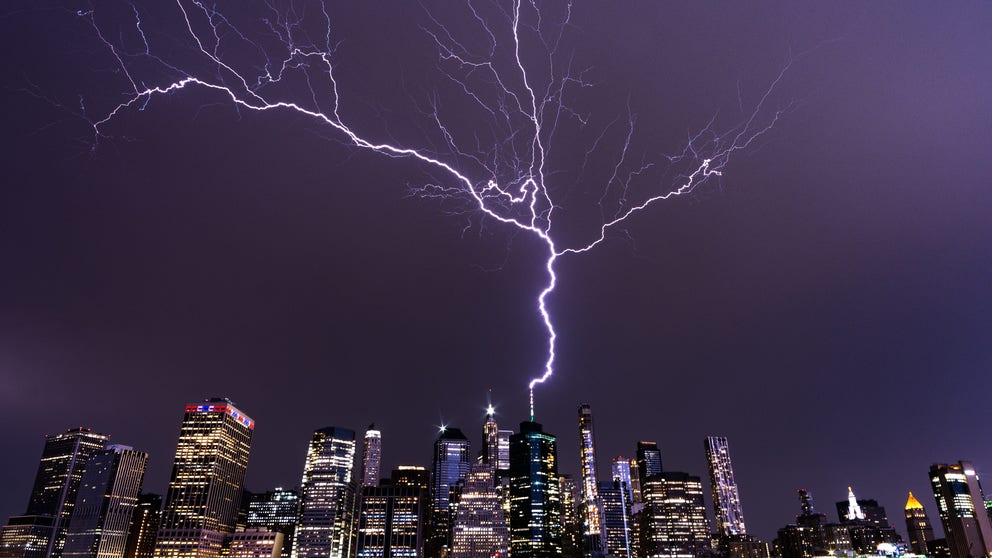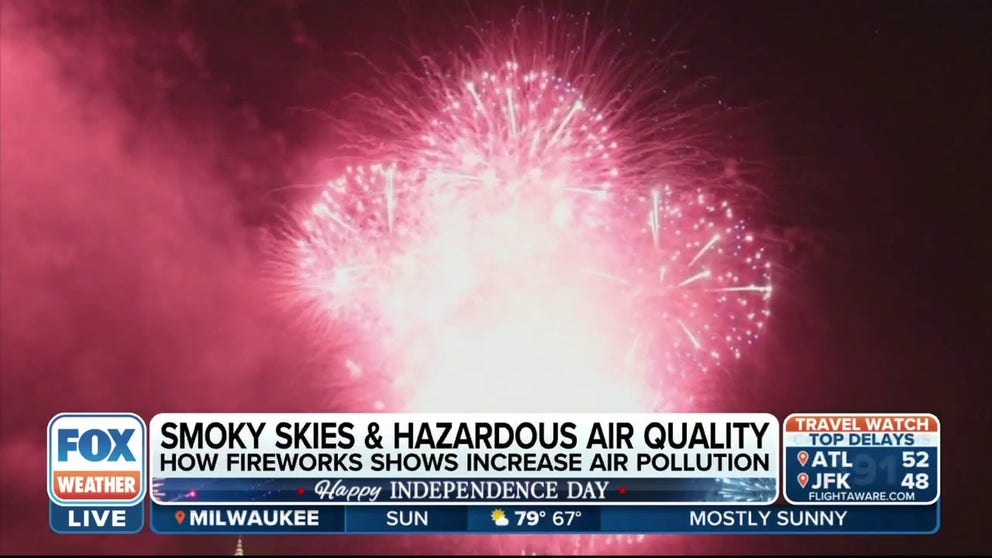4th of July fireworks can bring drastic drop in air quality
New York was the third most polluted city in the world for several hours last Fourth of July. They usually are not even in the top 3,000 most polluted cities for air.
WATCH: Nature's own fireworks for the Fourth of July
As we celebrate Independence Day, we've compiled our favorite "natural fireworks" lightning videos as submitted from viewers around the nation and world.
What would the Fourth of July be without fireworks? It turns out much healthier. Studies across the U.S. have shown a drastic drop in air quality at the first rocket’s red glare and bomb bursting in air.
"If you happen to be downwind from a big fireworks event, it is very hazardous," says Paul Walsh, Meteorologist and General Manager of BreezoMeter.com. "Fireworks also release fine particulate matter, which includes something called heavy metals… which is really bad to breathe that in."

Macy's Fourth of July fireworks in New York.
( Eduardo Munoz Alvarez/Getty Images / Getty Images)
7 FAMILY-FRIENDLY ALTERNATIVES TO FOURTH OF JULY FIREWORKS
Dangerous air quality levels have been found to stick around throughout the morning into the afternoon of July 5th. For most of the U.S., the wind calms down at night as the sun sets. Then the earth starts radiating the heat it absorbed from the sun. The warm air, which is less dense than cold air, rises into the atmosphere as the cold denser air settles to the surface.
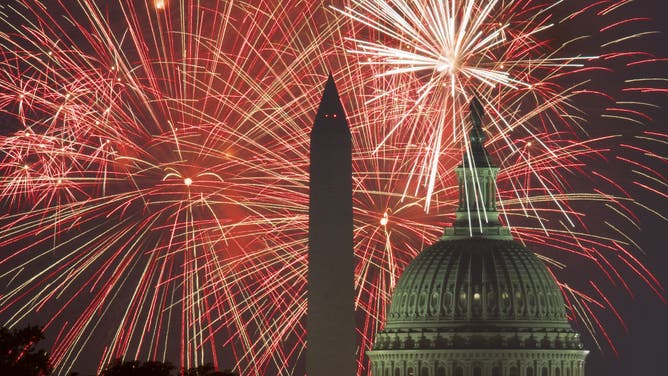
Fireworks exploding over the National Mall in DC.
(PAUL J. RICHARDS/AFP via Getty Images / Getty Images)
HOW WEATHER IMPACTS JULY FOURTH FIREWORK SHOWS
This is called a temperature inversion. The cold air traps pollutants like smoke and heavy metal particulates at the surface, where we breathe it in. The upper-level warm air is like a lid on our atmospheric pot, keeping everything stable and still. The atmosphere needs wind to mix up the stagnant air or sunshine to heat the ground to get warm thermals rising to improve air quality.
NYC was No. 3 – and not in a good way
WHAT IS A TEMPERATURE INVERSION AND WHY CAN IT LEAD TO POOR AIR QUALITY?
New York City, a city with relatively good air quality, on average scores 3,628 out of 6,475 cities, as reported by IQAir.com. A ranking of No. 1 is the most polluted and No. 6,475 is the cleanest city. So, on a regular basis, New York fares better than half the cities around the world, except on the Fourth of July.
In the overnight hours of July 4th into the 5th in 2023, New York's Air Quality reached hazardous levels.
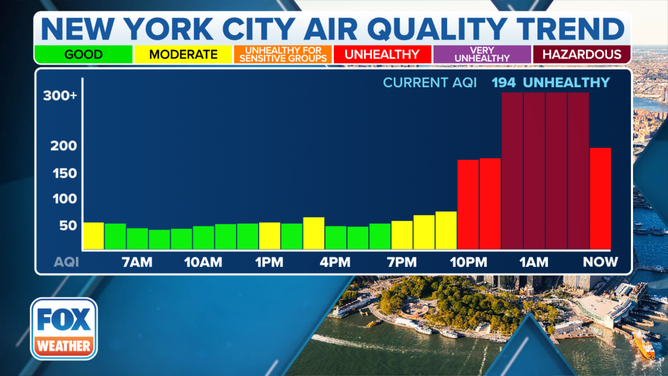
New York City Air Quality on July 4-5, 2023.
(FOX Weather)
Two years' prior, New York ranked among the most polluted cities in the world in the wake of Independence Day celebrations.
"(In 2021) in New York City, during July 4th, just after the fireworks, it was the third-most polluted city in the world," Walsh quoted data published by IQAir. "And in L.A., they had hazardous airborne conditions that lasted for quite a while for a large area around Los Angeles. Just even sparklers release toxic gases."
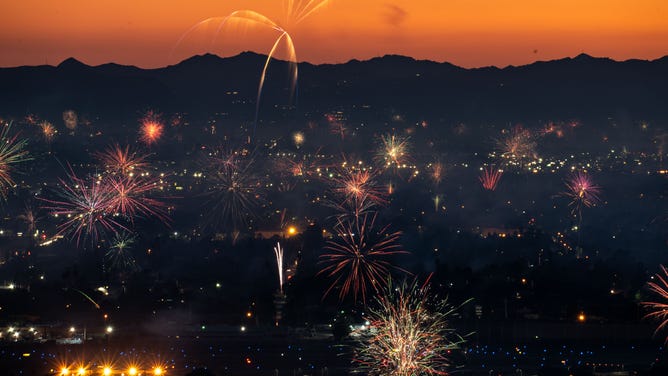
The air in Burbank, California heavy with smoke and pollution hanging over Los Angeles' San Fernando Valley.
(Kent Nishimura / Los Angeles Times via Getty Images / Getty Images)
In 2022, air quality officials in the greater Los Angeles area issued warnings ahead of time for July 4th and 5th.
"Breathing of fine particulate matter can lead to a wide variety of cardiovascular and respiratory health effects such as heart attacks, asthma aggravation, decreased lung function, coughing, or difficulty breathing and may lead to premature death in people with heart or lung disease," the South Coast Air Quality Management District stated in a press release.
How 4th of July celebrations are hitting your wallet
Breezometer.com general manager Paul Walsh joins FOX Weather on Sunday morning to explain how the 4th of July festivities will be hitting your wallet.
SOME 4TH OF JULY FIREWORKS BEING REPLACED WITH DRONES DUE TO FIRE CONCERNS
The American Pyrotechnics Association reports that the U.S. set off 50.6 million pounds of professional fireworks and 102 million pounds of consumer/backyard fireworks in 2020. Much of that is caught in the air we breathe.

A fireworks store in Indiana.
(Scott Olson/Getty Images / Getty Images)
The pyrotechnics are largely made out of gunpowder, chemical colorants, metals, paper and plastics. The firework explodes and releases gasses and fine particulates into the air with smoke, color and noise. Some of the gas and particulates settles back to the surface, or transported on the wind to another town.
10 CITIES WITH THE BEST AND WORST AIR POLLUTION IN THE US
Copper, lead, sulfur, cadmium, aluminum, manganese, arsenic, iron dust, strontium, barium, antimony and benzene toluene are just some of the dangerous metals and salts that fireworks release.
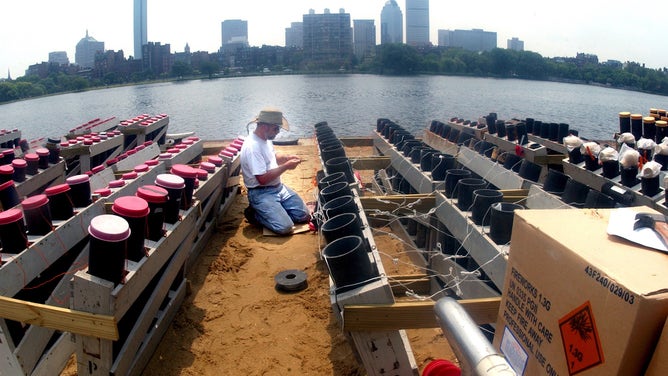
A pyrotechnician sets up for Boston's big patriotic night.
(MediaNews Group/Boston Herald via Getty Images / Getty Images)
Fireworks effects can linger for 5 days
Researchers in India discovered that airborne toxins like particulate matter, sulfur dioxide, nitrogen dioxide and ozone stayed in the air for five days after Diwali Festival fireworks. That level was over 2,800% above the limit set by the World Health Organization.
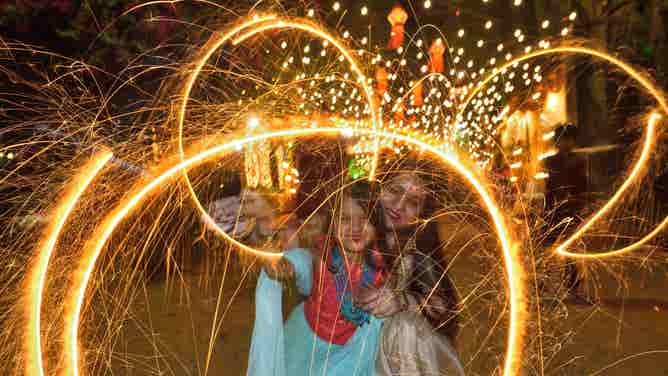
A family uses sparklers and firecrackers to celebrate Diwali, a festival of light.
(Satish Bate/Hindustan Times via Getty Images / Getty Images)
A Minneapolis study showed that particles that can be inhaled and accumulate in lungs or bloodstream increased by 180-600% on the 4th compared to levels of those on the evening of the 3rd. Carbon monoxide levels increased by 32%.
THE AIR QUALITY INDEX EXPLAINED
A 1975 study published in the National Library of Medicine found a 113% increase in respiratory illness treatments during fireworks.
How to protect yourself and your family from bad air quality on July 4
Local air quality officials and the CDC have several recommendations to stay away from the pollution:
- Sit upwind for the fireworks staging area and allow the breeze to blow the smoke away from you.
- Watch at least 500 feet away from the show.
- Try wearing an N-95 or better, an N-99 mask, if you are at the show.
- Young children, older Americans and anyone with an underlying respiratory illness should consider enjoying the show on TV or through a closed window. Replace the HVAC filter before the Fourth. Run air purifiers on high.
- Keep your eye on your local air quality levels.
Be sure to download the FOX Weather app to track the air quality in your area. The free FOX Weather livestream is also available 24/7 on the website and app and on your favorite streaming platform. The FOX Weather Update podcast also provides weather information for the entire country.
